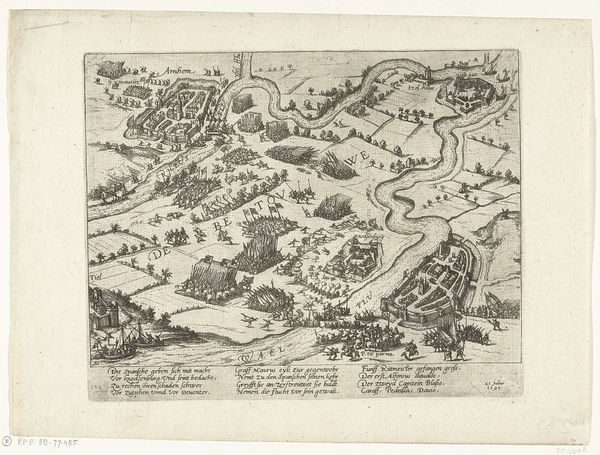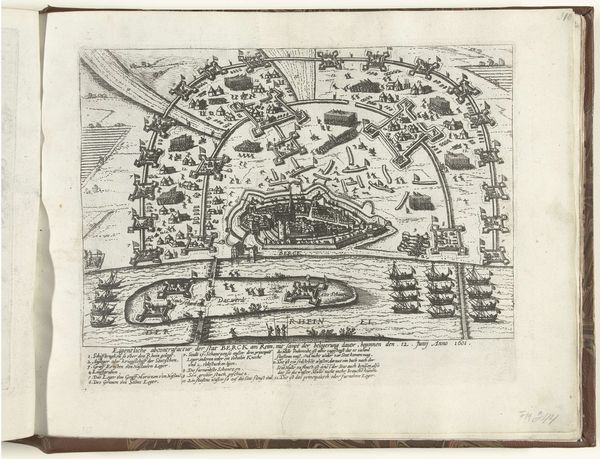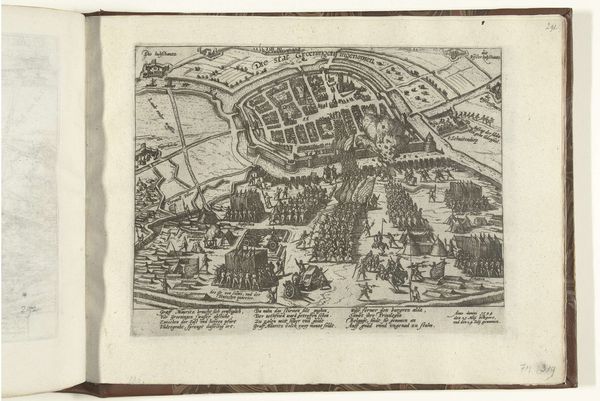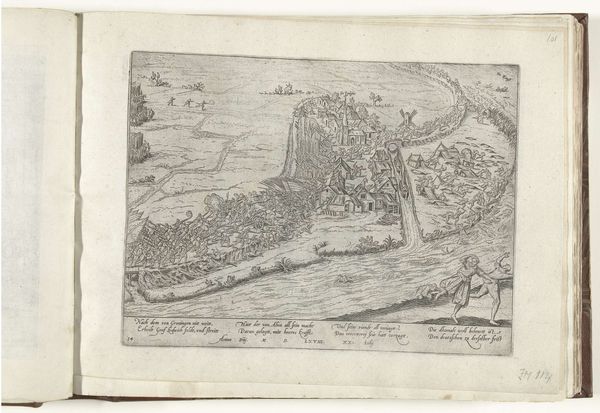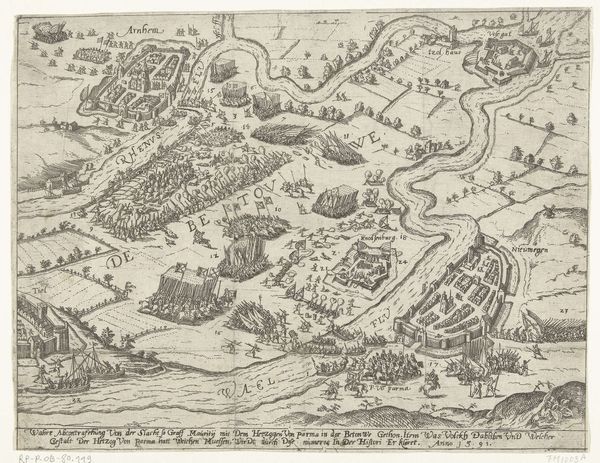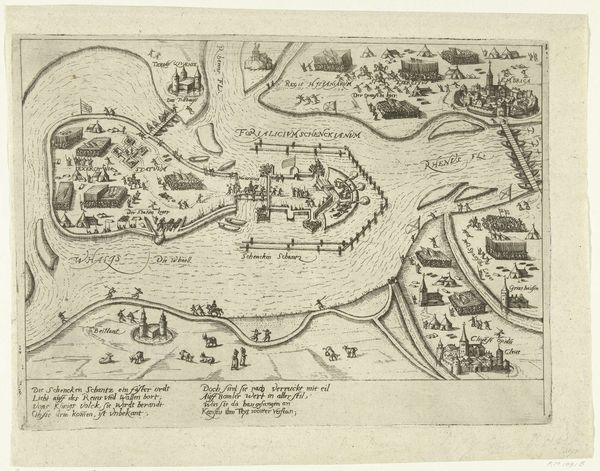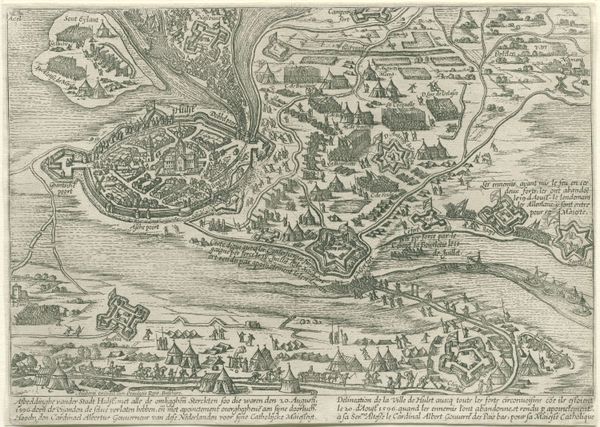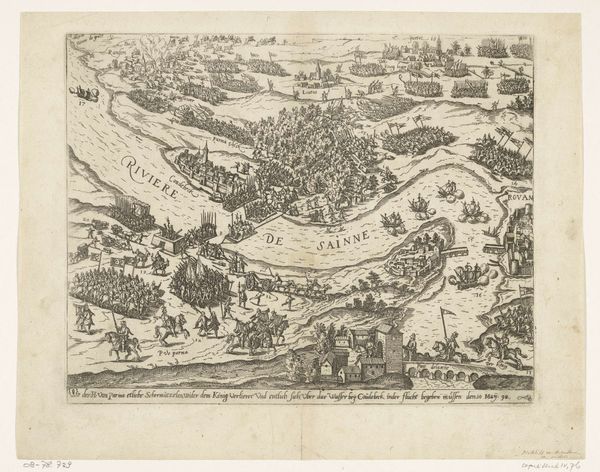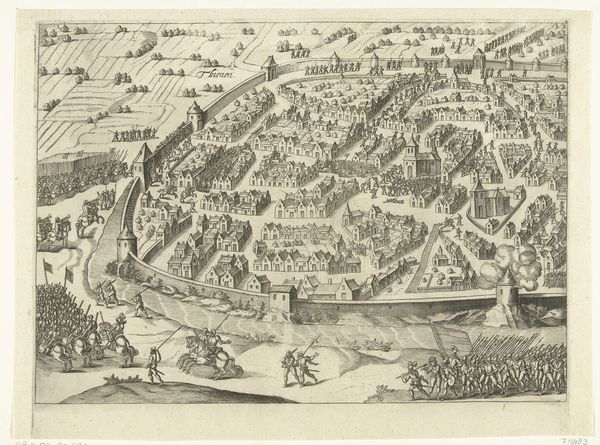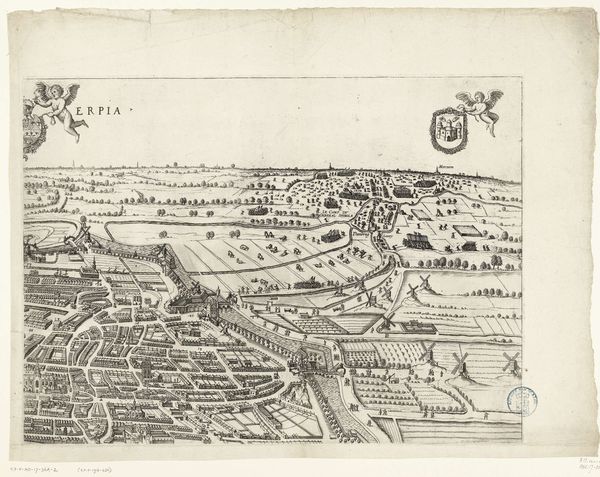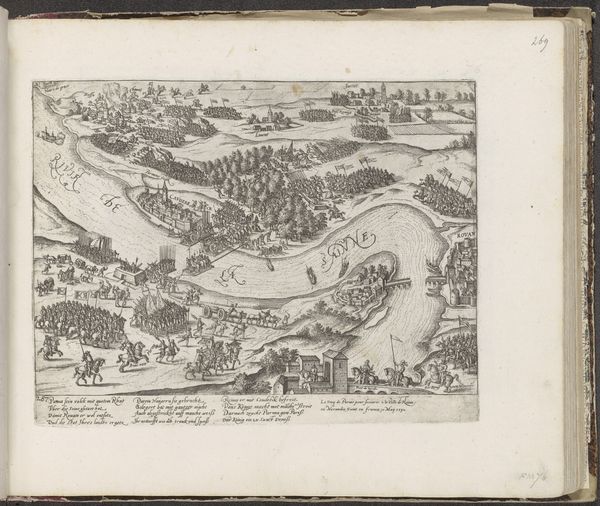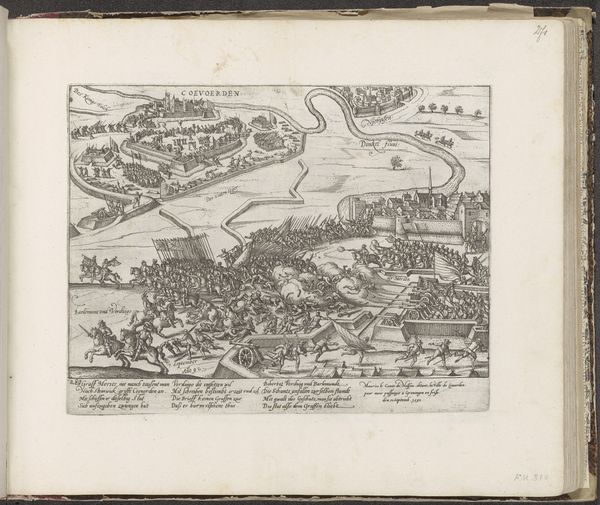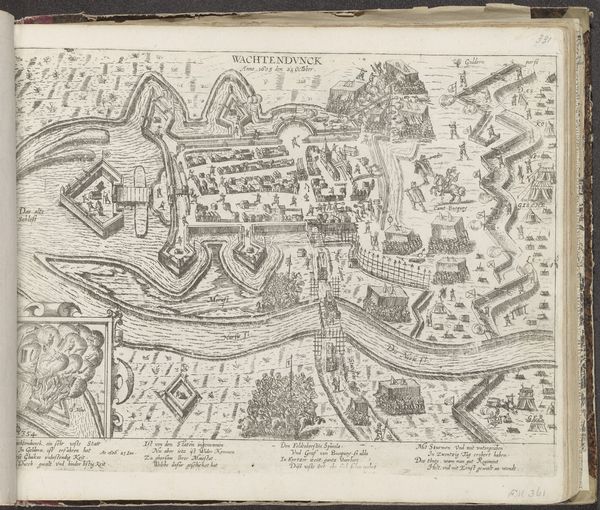
print, engraving
#
baroque
# print
#
landscape
#
cityscape
#
history-painting
#
engraving
Dimensions: height 210 mm, width 280 mm
Copyright: Rijks Museum: Open Domain
Editor: We’re looking at “The Siege of Coevorden by Maurits, 1592,” an engraving made sometime between 1592 and 1594 by Frans Hogenberg. It’s incredibly detailed; you can really get a sense of the chaos and the strategic positioning of the armies, but what strikes me most is the depiction of warfare as almost a bird's-eye-view diorama. What stands out to you about this work? Curator: What I find fascinating about Hogenberg's print is how it merges cartographic precision with propagandistic aims. This image isn't just documenting the siege; it's constructing a particular narrative around Dutch military prowess and the strategic brilliance of Prince Maurits. Notice how the cityscape is rendered with such detail, almost like a map, yet the depiction of the battle itself is quite romanticized, glorifying the clash of arms. Consider who this print was intended for. Do you think it primarily served a documentary or a political purpose? Editor: That’s a great question. Given the detail but also the slightly idealized view, I’d guess more political. It feels like it was intended to inspire confidence in the Dutch forces. Curator: Precisely. These prints circulated widely, shaping public opinion and solidifying support for the Dutch Revolt. The choice of imagery, the way Prince Maurits is positioned—it all contributes to a specific message about Dutch strength and divine favour. It really highlights how art, even in seemingly objective forms like prints, always has a political dimension. It’s also important to see how museums then played their part to propagate power by promoting such representations. Editor: I hadn't considered the power of printmaking as a tool for shaping public perception quite so directly. Looking at it now, the composition and detail suddenly feel much more deliberate, intended to shape the viewers' beliefs. Thanks for pointing out the political context, as this work now resonates quite differently. Curator: My pleasure. It shows how socio-political forces are so instrumental in our viewing and understanding of artworks.
Comments
No comments
Be the first to comment and join the conversation on the ultimate creative platform.
